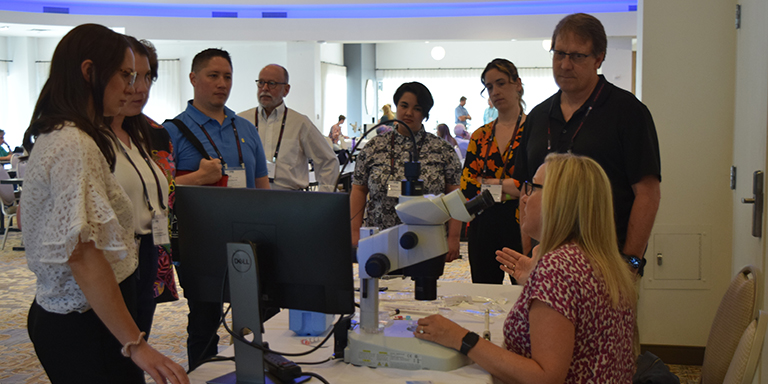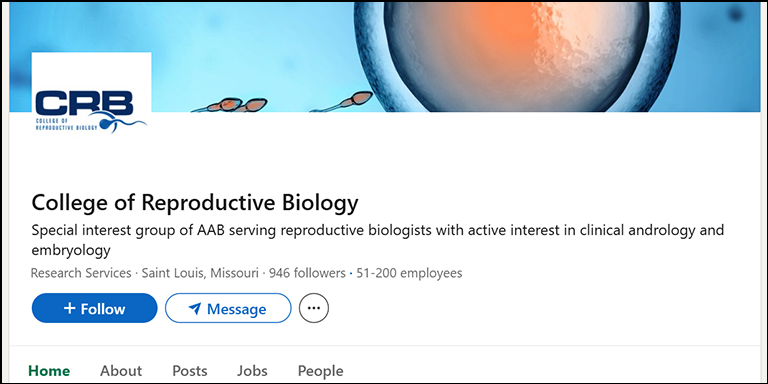
Newsletter
The College of Reproductive Biology (CRB) is a not-for-profit special interest group of the American Association of Bioanalysts (AAB).
Latest Research On Fertilization Assessment
Kinga Welander, M.Sc., TS(ABB)
One of the most desirable options for In vitro Fertilization (IVF) patients in recent years has been Preimplantation Genetic Testing for Aneuploidy (PGT-A). This method is being utilized in hopes of increasing live birth rates by carefully selecting embryos to transfer based on their genetic status. PGT-A is commonly performed on embryos at the blastocyst stage typically cultured from 2 pronuclei (PN) zygotes.
In 2025, Tise et al. reported a case study about live births of twin females from aneuploid embryos, which are often labeled as “abnormal” and typically not selected for embryo transfers in most US clinics. This proposes a question: If healthy children can be born from aneuploid embryos, should we consider saving and culturing abnormally fertilized oocytes for PGT-A in hopes of rescuing more embryos for clinical use?
There is limited standardization between IVF clinics regarding what is kept in culture at the zygotic stage. Some clinics will keep all embryos in culture regardless of the pronuclei status. Whereas, others may have policies in place to discard any embryo that does not show signs of normal fertilization such as 0 PNs on day 1 of culture, the appearance of abnormal fertilization, (1PN, >2 PNs), and/or evidence of abnormal cell division (Jiang & Bormann, 2023).
Given the possibilities of live births from aneuploid embryos (Barak et al., 1998; Tise et al., 2025), IVF labs could possibly reevaluate their retention criteria for abnormally fertilized oocytes in culture. The combination of day 1 of culture inclusion of abnormally fertilized oocytes and further PGT-A testing of those embryos, which grow to a viable blastocyst stage, may produce more clinically usable embryos (Capalbo et al., 2017). As technology progresses and new tools such as AI are introduced to enhance and aid selection of embryos for transfers (Jiang & Bormann, 2023), it is important for IVF labs to reassess their embryo inclusion culture criteria for every step/day of the embryo development.
Regarding the fertility clinics and their policies, counseling patients appropriately about their options and making informed decisions will become even more crucial and may involve experts beyond the clinical staff such as genetic and pediatric counselors and IVF field specialists, while providing more hope and opportunities for healthy live births, when utilizing established and expanded standardized protocols (Tise et al., 2025).
Works Cited:
Barak, Y., Kogosowski, A., Goldman, S., Soffer, Y., Gonen, Y., & Tesarik, J. (1998). Pregnancy and birth after transfer of embryos that developed from single-nucleated zygotes obtained by injection of round spermatids into oocytes. Fertility and Sterility, 70(1), 67–70. https://doi.org/10.1016/S0015-0282(98)00106-X
Capalbo, A., Treff, N., Cimadomo, D., Tao, X., Ferrero, S., Vaiarelli, A., Colamaria, S., Maggiulli, R., Orlando, G., Scarica, C., Scott, R., Ubaldi, F. M., & Rienzi, L. (2017). Abnormally fertilized oocytes can result in healthy live births: Improved genetic technologies for preimplantation genetic testing can be used to rescue viable embryos in in vitro fertilization cycles. Fertility and Sterility, 108(6), 1007-1015.e3. https://doi.org/10.1016/j.fertnstert.2017.08.004
Jiang, V. S., & Bormann, C. L. (2023). Artificial intelligence in the in vitro fertilization laboratory: A review of advancements over the last decade. Fertility and Sterility, 120(1), 17–23. https://doi.org/10.1016/j.fertnstert.2023.05.149
Tise, C. G., Verma, K., Rivera-Cruz, G., Chamanara, S., Gerber, S. K., Boyd, A., Mazzoni, R., Nel-Themaat, L., Behr, B., Milki, A. A., & Lathi, R. B. (2025). Healthy euploid dizygotic twin birth after transfer of nonmosaic aneuploid embryos. Fertility and Sterility, 0(0). https://doi.org/10.1016/j.fertnstert.2025.06.033
CRB News Articles
10/21/2025
Vol. 14, No. 2
10/21/2025
Welcome Letter by Alison Bartolucci, Ph.D., HCLD(ABB)
10/21/2025
CRB News Updates
10/21/2025
CMS Validation Inspections: A Real Possibility
10/21/2025
Latest Research On Fertilization Assessment
10/21/2025
Artificial Intelligence: The Question Is Not If We Should Use It, But How We Use It Responsibly
10/21/2025
How To Train Your Dragon: Best Practice For Raising A New Embryologist
10/21/2025
Andrology Antics by Samuel Prien, Ph.D., HCLD(ABB)
10/21/2025
Contribute to the CRB Newsletter!
CRB Standing Rules - Log in to view



